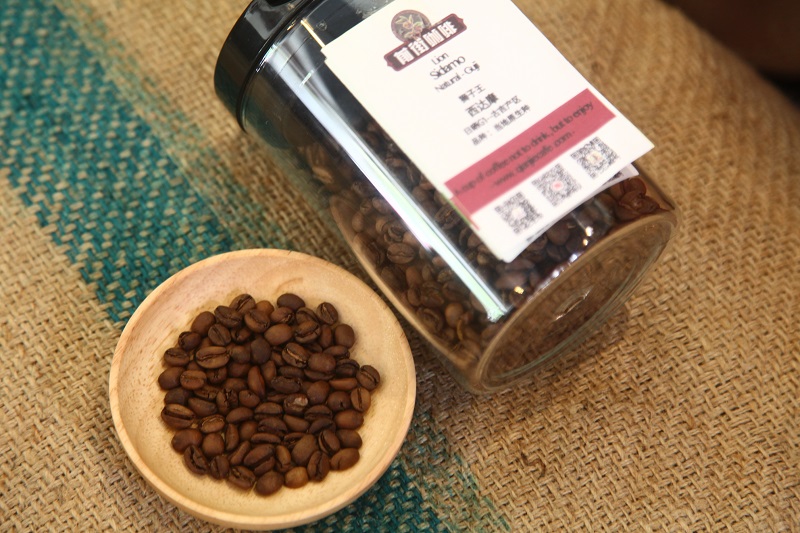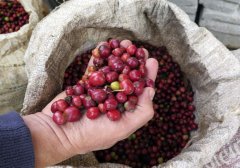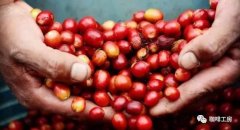Does the lion king in Sidamo, Ethiopia have lions? What's the difference between sunbathing and washing raw beans?
Does the lion king in Sidamo, Ethiopia have lions? What's the difference between sunbathing and washing raw beans?

Place of origin:
Name: Ethiopia
Location: East Africa
Capital: Adis Abba Addis Ababa
Religion: dominated by Christianity
Language: Amharic
Time zone: GMT+3
Measurement: metric (Metric)
Currency: bill Birr (1 $≈ 20 birr)
Agricultural products (export): coffee, flowers and sesame are the main cash crops
Port: Port of Djibouti (Djibouti, now the main export port)
Average annual temperature: 15-20c in highland and 25-30c in lowland
Average annual rainfall: 1000-2000 mm
Soil: 50% volcanic soil (volcanic)-25% sedimentary soil (sedimentary)-25% other
Nine boutique producing areas in Ethiopia
Ethiopia has the most diversified coffee planting system in the world, including forest coffee, semi-forest coffee, pastoral coffee and plantation coffee. 90% of the coffee in Ethiopia comes from pastoral, forest and semi-forest, but large-scale entrepreneurial cultivation in Ethiopia is indeed very rare, perhaps in order to produce so many boutiques.
Forest coffee: refers to the wild coffee in the primeval forest, which is protected by the local government and picked by special personnel.
Semi-forest coffee: means that farmers regularly go to the forest to trim shade trees or coffee leaves to increase light transmittance and yield, even so, the annual yield is not high.
Pastoral coffee: refers to small farmers in their own pastoral mixed coffee and other economic crops, and most of them are planted under the elephant leg plantain, which forms its unique landscape. But this is the main mode of production in Ethiopia.
Planting Coffee: refers to the current state-owned enterprises, specializing in improving efficient mass production.
How to handle it:
Ethiopian coffee can be divided into two treatments. Washing treatment method II. Natural sun treatment. Nowadays, every cooperative or even a small coffee farm in Ethiopia produces coffee beans of the above two treatments at the same time, whether it is the well-known Yegashev producing area in Taiwan or the Sidamo producing area. Not only that, in Ethiopia, which is currently the country with the fastest development of coffee, it not only makes coffee different in treatment, but also makes aroma and taste different due to the adjustment of different techniques and processes. Yegashev sun beans are different from Sidamo sun beans in aroma, which often gives people an illusion. The aroma is mild, low-sinking, citric acid is soft and low-key, the consistency of flavor is high, and the taste of Isopia coffee beans is won by taste, while the strong aroma of Esopia coffee beans shows strong aroma, the weak flavor of citric acid is not obvious, and the complex flavor is characterized by flower or fruit fragrance.
[sun Sidamo]: the bean body is smaller than Longberry, and it is yellowish in green. in the sun drying field of Sidamo, the coffee is placed in a hemp net wooden rack, and the workers take turns to stir the coffee manually in the sun. Sidamo is usually marked with G4 exit, while water-washed Sidamo is mostly exported at G2 level because of the better sun treatment process.
[washed Sidamo]: coffee raw bean green is slightly gray, some places are thick and some places are small, the acidity is soft and strong, mellow, sweet and spicy, it is one of the courtyard coffee in the highlands of southern Ethiopia. Unlike ordinary African coffee, Sidamo has clear acidity, smooth taste and delicate floral smell.
Cooking data:
Sun, Sidamo, the Lion King! 15 grams of beans, steamed in 90 °water for 30 seconds, powder / water ratio at 1:15
Baking records and lessons learned:
When the baking quantity is 500g, 100g samples are taken to estimate the defect ratio. Raw beans have a very good fermented sour flavor, such as pickled carambola, the bean appearance is also very beautiful, only 3.6 g defects are picked out in 100g, and it is mainly chopped beans, which is a very good quality in terms of sun Heirloom.
The bean has high density and high water content, so the temperature of the bean is set at 185C, the weight is 481g, the recovery point is about 1 minute 96.7C, the time of explosion is about 6:45, 198.6 °C, 45 seconds after the explosion, the temperature is 205C at 7:30. The weight of cooked bean is 429.2g and the weight loss rate is 11%.
After 24 hours, it was tested with 20g coffee, 45g Espresso extracted at 93.1g and made into hot American style with warm water. When grinding, such as the sweet aroma of red berries is obvious, after diluted with water, the main tone of the wet aroma is converted into apricot, with a little juicy flavor of citrus and peach and the sweet and sour feeling of berries, the overall sense of balance is also quite good, although the fruit taste spectrum is too wide, lack of strong tone, it is difficult to give a quick blow to the drinker, but it is a good, changeable coffee. But it's a pity that it's sold out. We'll have to wait until next year.
Important Notice :
前街咖啡 FrontStreet Coffee has moved to new addredd:
FrontStreet Coffee Address: 315,Donghua East Road,GuangZhou
Tel:020 38364473
- Prev

What is the Red Cherry Project of the Yejashafi Biloya Cooperative? Cherry coffee?
What is the Red Cherry Project of the Yejashafi Biloya Cooperative? What is the plan of red cherry in terms of origin and flavor? Action Red Cherry is also a reinforcing method, which makes the farm pay more attention to the process of selecting beans, and the price of these coffees is relatively high. Red Cherry Action has water washing, sun drying beans, half-washing, half-sun, experimental coffee and so on. Yegashev is the main producing area.
- Next

Sidamo Sakuran is the champion bean? How to make Sakuran taste better? What are the flavor characteristics?
Sidamo Sakuran is the champion bean? How to make Sakuran taste better? Planting place: only the sun-tanned coffee beans produced by Buku Abel in Hambella producing area are the real Sakuran. Hambella (Humbela) is located in the largest coffee producing area of Ethiopia, GUJI, and the west is opposite the mountain of Yegashefi kochore, which is the highest sub-area in Ethiopia. At present, there are nearly 20% of Hambella producing areas.
Related
- Detailed explanation of Jadeite planting Land in Panamanian Jadeite Manor introduction to the grading system of Jadeite competitive bidding, Red bid, Green bid and Rose Summer
- Story of Coffee planting in Brenka region of Costa Rica Stonehenge Manor anaerobic heavy honey treatment of flavor mouth
- What's on the barrel of Blue Mountain Coffee beans?
- Can American coffee also pull flowers? How to use hot American style to pull out a good-looking pattern?
- Can you make a cold extract with coffee beans? What is the right proportion for cold-extracted coffee formula?
- Indonesian PWN Gold Mandrine Coffee Origin Features Flavor How to Chong? Mandolin coffee is American.
- A brief introduction to the flavor characteristics of Brazilian yellow bourbon coffee beans
- What is the effect of different water quality on the flavor of cold-extracted coffee? What kind of water is best for brewing coffee?
- Why do you think of Rose Summer whenever you mention Panamanian coffee?
- Introduction to the characteristics of authentic blue mountain coffee bean producing areas? What is the CIB Coffee Authority in Jamaica?

